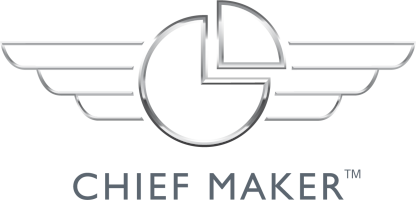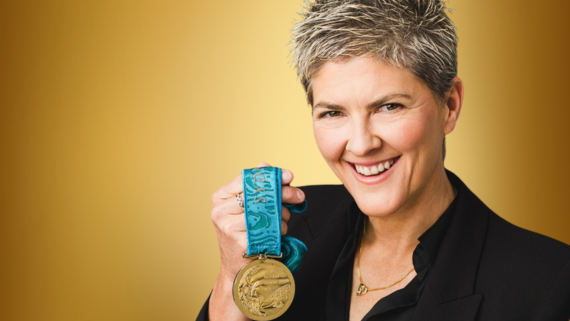
Subscribe to Spotify![]()
G’day Chiefs
In today’s minisode, I want to help you to make massive moves by allocating time in your diary to slow down and be more strategic. We're going to talk in depth about something that I've had a growing passion for over time. It's called deep thinking time, or deep structured thinking time.
I’m sure there are busy periods of your life where you’re rushing around, and not delivering to capacity. You don’t slow down and stop to think, so as a result you end up with low quality consequences, possibly in several areas of your life.
When I first started out in the coaching world, I obviously went and did all of the courses to learn about coaching, psychology and neurolinguistics. And during that time, I came to understand that there are a lot of problems in my life where I just was not using the full power of my own brain to solve all of my problems. Sometimes, I would rush in quickly, and I wouldn't define the problem well. It was poor quality thinking.
Learn from the best
Bill Gates has an annual tradition where, for a week, he goes out to a remote log cabin and all he does is read and think. There's a great line by Yoda: “You will know the good from the bad when you are calm, at peace.”
One of the most recommended books on our show is Sapiens by Yuval Noah Harari, who is probably one of the most sought after thinkers on the planet. He explains that in his early days, he was really battling to come up with some quality thinking, and so he learned meditation. And he said to himself, “If I can't meditate for an hour, if I can't even think or stay calm on one thing for an hour, how can I try and solve the world's biggest problems?” What he was doing in those moments was finding a way to really bring to the fore his greatest wisdom, which is his real strength.
I was also given a book a while back called The Road Less Stupid by Keith Cunningham, a very successful property magnate in the USA. He made millions of dollars, and then he lost it all because he just didn't see things coming. As a result, years later, Keith actually remade all that money, but what he did was he started putting in his week and his month structured deep thinking time.
Ownership (of time) precedes victory
And that's what I want you to think about now, and to start finding a way to get this into your life and into your work. Imagine for a minute the biggest problem you've got right now. Ask yourself, “What percentage of my brain – what creativity, experience, wisdom and knowledge – am I bringing to solve this problem? How much ownership of that problem am I taking? And how much energy am I putting into actually solving it to get a really creative, low-risk, high-quality, high-impact outcome?”
Normally, when I'm battling with a problem, the answer to those questions is a bit embarrassing. It's not a great number. But when I take ownership of that particular challenge, and I say to myself that I'm going to bring all of myself to solve this problem, things change immediately.
And what I'm actually talking about is finding the time to let the brain go to work. Get away from the office, get away from home, go up into the mountains or the beach or somewhere remote, somewhere isolated, and have structured deep thinking time for a minimum two to four hours, maximum several days.
This is not as hard as some might think to actually get into your life. Yes, we feel like we've got to be at this meeting, or meet this deadline, or be present for that. To be honest, most of those are self-constructed ideas that we can challenge easily. Find some time to get away, Chief; the separation from your current environment and scenario is key.
Setting yourself up for success
Pick an environment that you know is going to inspire you. It might be a cabin somewhere. It might be on the beach. It might be a desk in the hills. It might be this corner of a cafe that you know never has anybody in it. Find the space. Environment is key.
Set the intention of this time you will have to yourself. Be present, be 100% focused and committed to deep thinking time. This is YOUR time to think and you need peak concentration here. You also don't want to be interrupted, so you might need to inform people like your partner or your kids. Some people even put on white noise or music.
And the last thing is to make sure you've got all of the resources you need. Whether that’s papers to read, additional data, some inspiration, anything. Ensure you have it beforehand.
Turn up ready to solve a problem, to finish something that's going to require big thinking. Lock the world out. Create that space and then focus on one thing.
A few techniques for the best outcomes
1. Mind mapping
Complex issues that are hard to solve are really good when they're out of your brain and on paper. Get all the little things out around this particular problem, define it in detail, and you will find that a lot of the pressure, anxiety and complexity just disappears. Let it flow.
I've got a little rule when I'm mind mapping. To start, I draw branches, and I add items and I don't finish until I have gotten everything out of my head on that particular topic. Anything more in my brain, in my unconscious, in my heart, that is rattling around on this problem, I try and make sure it's out, onto the page. So mind mapping is a great technique to allow complexity to be simplified.
2. Timeline
I'll actually put a couple of markers on the ground that might be representing today, which is where I am right now. Then I put another marker, maybe five metres away, that represents a future date and time that I'm trying to reach, and it has the goal, a vivid vision of what I'm trying to achieve.
I might walk up and down the timeline; I was doing one the other day and I had my headphones on and I was walking up and down this timeline and I was standing back from it and I was just trying to bring some creativity. It just made it such an interesting and fun process and my brain was lit up! I was absolutely focused.
3. Questions
Try and build up a bank of really cool questions. We've done another episode on the podcast about power coaching questions such as:
“What percent ownership of this problem am I taking?”
“What would my greatest mentor do right now?”
“What am I pretending to believe to be true?”
“If I could spend $1 million on one thing in this problem, what would be the one thing I would spend it on?”
“What is not the problem?”
“How can I fix the risk equation? How can I increase the upside and decrease the downside of this particular equation?”
These are the kind of questions that I've just found over the years just open doors into my brain I never knew existed. I know Tim Ferriss has a bunch that he uses in his annual review, and I've used a few of his, and I’ve also borrowed some from neurolinguistics.
4. Defining the problem accurately
Most people, when they look at a problem, actually consider the consequence only. As an example, Keith Cunningham would say that people would say that their problem is cash flow, but that's not actually the problem, that's the consequence. The problem is probably either a revenue or a cost issue. Maybe they haven't defined a system that generates consistent and bankable revenue. Or maybe there are no policies in place to minimise costs or keep costs manageable.
What’s interesting is that if I come back two or three or four times to this problem, the quality of my answer just gets better. And then eventually, I just get this sense, that's it. I've done enough. I understand this now, and I can go and take some meaningful, quality action.
So, Chief, do as the other great Chiefs do and build in this strategic thinking time into your week and month. When I don't have it in my life, I just feel like the world is starting to close in around me and there's too many big things that are happening that I can't control.
There is a great saying in the coaching world and that is that we fundamentally believe that the resources to solve a problem exist within the client. As a coach, it's our job to draw those resources out, to let them solve their problem for themselves. This is your opportunity to do that for yourself.
Stay epic,
Greg
MINI-MBA IN LEADING HIGH PERFORMANCE TEAMS
Limited spaces per intake







